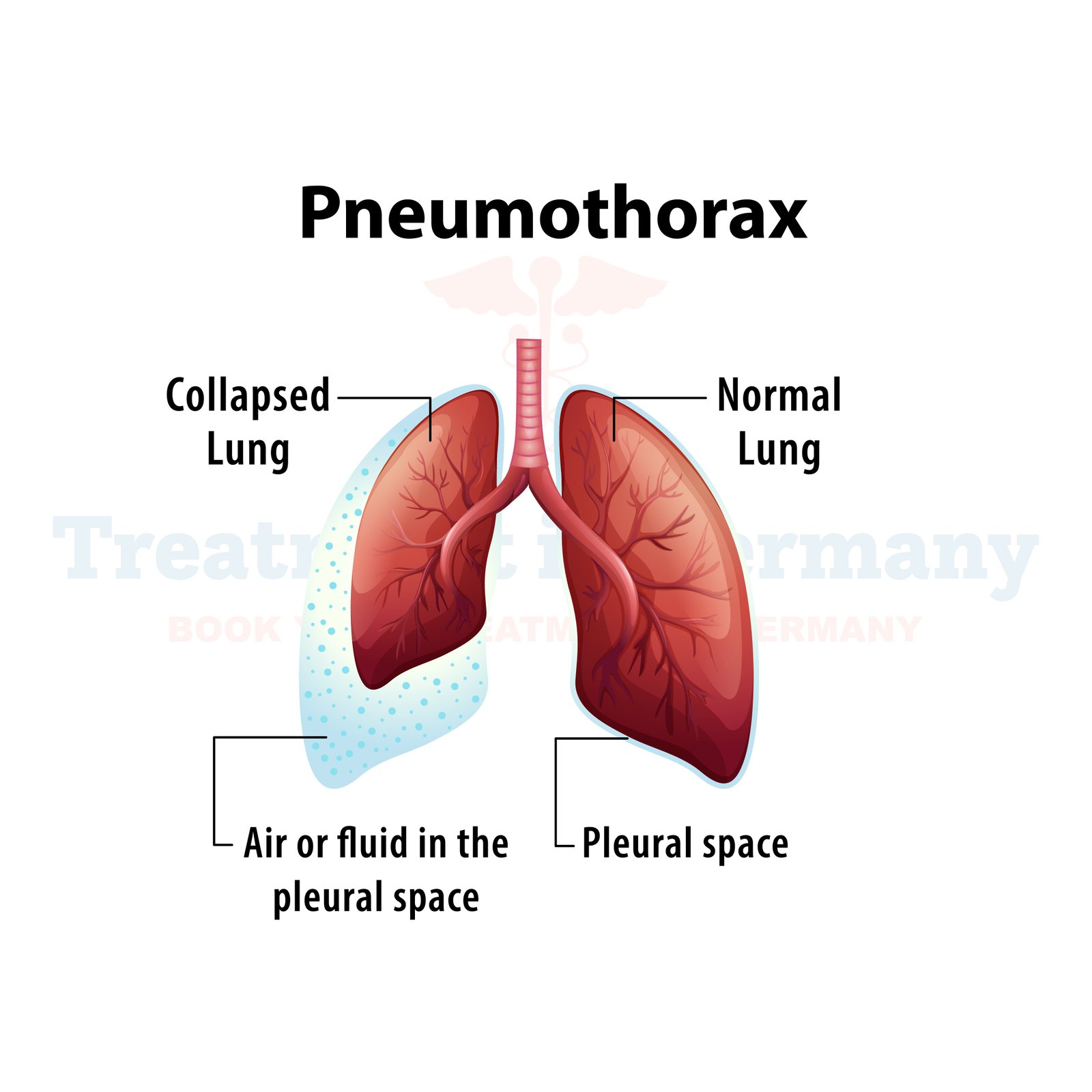What is Pneumothorax?
Pneumothorax, often referred to as a collapsed lung, occurs when air leaks into the space between the lung and the chest wall, causing the lung to collapse partially or completely. This can result in difficulty breathing and chest pain, ranging from mild to severe.
Side effects of Pneumothorax:
The symptoms of pneumothorax can vary depending on the extent of lung collapse. Common signs include sudden chest pain that worsens with breathing or coughing, shortness of breath, rapid heart rate, and in severe cases, bluish discoloration of the skin due to lack of oxygen.
How is Pneumothorax diagnosed?
To Diagnose Pneumothorax, your doctor may conduct a physical examination and order imaging tests such as chest X-rays or CT scans. These tests help to visualize the presence of air in the pleural space and determine the extent of lung collapse.
Potential treatments of Pneumothorax:
· Observation: Small, uncomplicated cases of pneumothorax may not require immediate intervention. Your doctor may choose to monitor your condition closely to see if the air reabsorbs on its own.
· Needle Aspiration: In cases where the pneumothorax is causing significant symptoms or is large, your doctor may perform a needle aspiration. This involves inserting a needle through the chest wall to remove the trapped air, allowing the lung to re-expand.
· Chest Tube Insertion: For more severe or recurrent pneumothorax, a chest tube may be inserted into the pleural space to drain the air over a period of days. This helps the lung to re-expand fully.
· Surgery (Thoracoscopy or Thoracotomy): In cases of recurrent or persistent pneumothorax, or when other treatments fail, surgery may be necessary. Thoracoscopy or thoracotomy procedures involve repairing the lung and preventing further air leaks by removing any blebs or sealing the lung tissue.
👉 Contact us for further information and receive a complimentary consultation.

.webp)
.webp)
 (1).webp)
 (1).webp)

.webp)
.webp)
 (1).webp)
 (1).webp)
